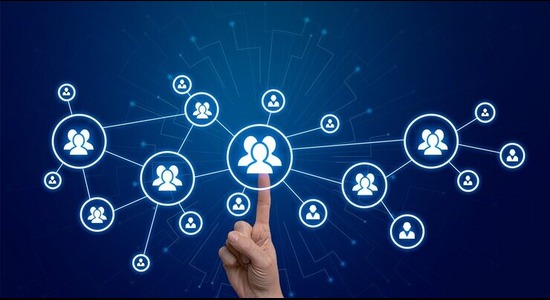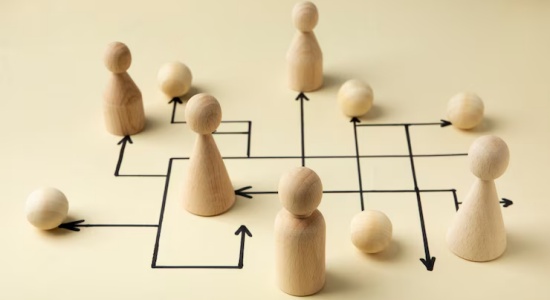- Resources
- Customer Lifecycle Management: A Complete Guide
Customer Lifecycle Management: A Complete Guide

Maintaining the client lifecycle can be critical depending on what products or services you sell. The more expensive or intricate your product, the more you must understand the various stages of the cycle to preserve (and grow) customer lifetime value.
Customer lifecycle management is identifying the customer lifecycle stages and assigning specific metrics to evaluate a company’s success. Effective CLM enables organizations to enhance conversion rates, boost customer retention, and drive significant business growth. This approach requires businesses to analyze customer needs and behaviors to deliver maximum value, set up the right objectives (such as acquisition versus retention), and determine the most effective engagement methods. Many companies have achieved remarkable success by implementing these strategies.
In this article, we’ll look at the importance and benefits of customer lifecycle management and a comparison between it and customer lifetime value. We will also review the five stages of customer lifecycle management, key performance indicators and recommended practices. Keep reading!
In this article, we will explore:
- 1. What is Customer Lifecycle Management?
- 2. Importance of Customer Lifecycle Management
- 3. Customer Lifecycle Stages
- 4. CLV vs CLM
- 5. Steps to Manage Customer Lifecycle
- 6. Customer Lifecycle Management Examples
- 7. Customer Management Lifecycle: Best Practices
- 8. How Customer Experience Management Platforms Help Manage Customer Lifecycle?s
What is Customer Lifecycle Management?
Customer Lifecycle Management (CLM) is a strategic approach that businesses employ to understand and cater to the needs of their customers at each stage of the customer journey. Customer lifecycle management (CLM) is inextricably linked to customer relationship management (CRM), and it is ultimately the result of many customer-related indicators that firms track throughout time. It entails allocating measurements to each stage of the consumer lifecycle and analyzing them to better understand performance.
Consider the customer lifecycle as an arc that begins with the customer learning about your organization or products and progresses to the ultimate goal: customer loyalty. This is critical for understanding the client journey and ensuring that agents have the tools to give the best service at each point.
The customer lifecycle also provides a comprehensive picture of a company’s activities, allowing decision-makers such as customer success managers to make more informed business development and customer care decisions.
It also helps businesses find areas for improvement and improve the client experience. For example, it can help organizations decide which resources to create so customers can obtain the answers they need through self-service assistance.
Importance of Customer Lifecycle Management

Customer lifecycle management enables businesses to track a customer’s journey from the moment they are introduced to a company. Let’s look at how all of this is important for businesses and can help them:
Simplifies Operations
Businesses generate vast amounts of data, which frequently overlap with one another. CLM helps brands reorganize their information into a central location where marketing, sales, finance, purchasing, and other departments can access it and collaborate to achieve its overall goals. It also streamlines procedures, increases visibility, enhances efficiency and productivity, and enables a corporation to be more decisive in its operations. It can eventually help them outperform their competitors.
Offers Competitive Advantage
Businesses can use CLM to give tailored and exclusive services to their clients across the whole customer lifecycle. As a result, they may better understand and engage with their customers, improving their overall experience with the company. It occurs with the data created by CLM, which allows brands to better understand their customers, their purchasing behavior, and their unmet requirements and expectations. Once recognized, brands may address customer problems and increase customer happiness.
Reduces Churn Rate
The churn rate is the number of customers who have left the brand over a certain period divided by the total number of customers at the start of that period. As a result, brands must constantly evaluate their turnover rate and seek to keep it as low as possible. CLM enables brands to better understand their customers and establish trust and loyalty to the brand. As a result, it improves client retention and lowers attrition. As a result, even a tiny percentage reduction in churn rate will increase income.
Upsells and Cross-sells
Customers’ shopping habits can vary, either up or down. With CLM, brands can identify and offer clients the most recent purchasing plans. Brands may also reach out to customers proactively and offer consumables for previously purchased products.
Facilitates the Transmission of Product Value
With properly organized data from CLM, brands may communicate with customers at various stages of the customer lifecycle. Every consumer needs tailored communication with the business because they have different purchasing needs and objectives. It will help the brand build long-term customer relationships and provide a wonderful customer experience.
Customer Lifecycle Stages
Client lifecycle management consists of five stages, each of which may be examined using metrics to optimize a prospective client’s experience and likelihood of conversion to a paying customer. Let’s go over each of these client lifecycle stages in depth now!
Approach
The first step in the customer lifecycle is the approach stage. The marketing team is accountable for most of the effort here because the customer is only a lead. The goal is to turn them into customers, but first, the sales and marketing teams must determine whether the leads are worth working with.
Lead scoring and segmentation allow you to analyze the behavior of a group of leads who could become potential customers. Points are added or removed from their score every time they perform something. If a lead unsubscribes from your email newsletter a week after subscribing, it will lower their score.
The greater the weight you assign to an activity, such as purchasing a product vs opting in, the more points they will receive. Segmentation is dividing leads depending on age, gender, geography, occupation, job title, income, pain areas, and so on. The most valuable leads are converted into prospects, marketing-qualified leads (MQLs), and sales-qualified leads (SQLs).
Use Case: Muthoot Gold wanted to create awareness about their new product among 5 million-strong customers while reaching out to new customers digitally. They deployed Ozonetel’s CCaaS Platform for WhatsApp, voice bots, and other customer engagement technologies to build awareness and create positive engagement in a lean, agile, and cost-effective manner. WhatsApp garnered over 150,000 impressions in 9 months while the data-driven approach led to a significant increase in the average order value from Rs 20,000 to Rs 50,000.
Lead Optimization
Following the approach step, your leads will enter the acquisition lifecycle phase. At this point, you have highly interested leads or prospects who are very likely to convert into clients.
A dedicated sales and customer support representative should be available to address any questions or issues your leads may have. Aside from that, your marketing and sales teams must do their best to demonstrate the utility and value of the product or service you’re attempting to offer to each group of leads.
Remember that segmentation is still important here since even the most qualified leads will have different pain points. While segmenting your leads, you may attempt to market multiple products or services, distributing them among your numerous audience segments. This will aid targeted marketing efforts and can improve acquisition.
Use case: SABOO RKS, a leading automobile dealer in Hyderabad , had leads coming in from multiple sources and it was a challenge to identify sources and reach out to them in minimal time. It took nearly 2 to 3 hours to follow up with leads post their inquiry which resulted in significant number of lead dropouts. SABOO RKS leveraged deep dialer-CRM integration (Ozonetel & Zoho) which eliminated the need for manual data entry and reduced the risk of errors. The company can now reach out to prospects and customers in less than 30 minutes and improved conversions by 45%.
Conversion
Here’s where the rubber hits the road – you make the deal, and the prospect becomes a customer. The key to success at this level is to focus on selling the relationship rather than the product itself.
At its most fundamental level, conversion occurs when a customer pays to begin utilizing your product or service. One of the most essential sales conversion indicators is conversion rate, which indicates what percentage of leads became customers. For example, if you generated 20 orders in a month and received 2,000 unique visitors to your website, your conversion rate would be 1%.
However, remember that your conversion rate is not going to be 100 percent. You’ll lose some sales. At that point, the prospects’ customer lifecycle will end. However, this does not imply that you should immediately seal and store their files permanently. Instead, view missed sales as learning opportunities. Furthermore, you should track and store this data so that it may be used to inform future sales and marketing initiatives and strategies.
Use Case: A leading healthtech company used Ozonetel’s intelligent routing mechanism to effectively transferred a lead to the right healthcare advisor and the right channel based on their demographics, their diagnostic requirements, and their preferred language. Teams receive lead source information to handle each conversation more effectively. Through source identification, agents can tailor their scripts accordingly. This dynamic system ensures optimal customer engagement and has resulted in 40% higher sales within twelve months.
Retention
The fourth stage involves retention. Now, you must adapt your marketing and sales content based on feedback to tailor it to your client’s demands. In essence, you need to keep them. Use upselling, cross-selling, and ongoing assistance to better retain your clients.
Use Case: One of India’s leading health insurance companies faced customer complaints and increased competition, prompting them to enhance customer trust, prevent revenue loss, and reduce churn. They deployed Ozonetel cloud-based contact center solution across 200 branches with 24/7 support from our CX partner’s dedicated Point of Contact. With this new system in place, our executives can still access customer details but are now restricted from viewing mobile numbers and precise addresses. Their retention rate rebounded to 85% in the first six months, saving nearly 400 crores in revenue.
Loyalty
In many lifecycle management models, the final stage is loyalty, which represents the end of the lifespan. The consumer may become almost like a brand evangelist, recommending your products and services to others in their professional and personal lives.
Use Case: Big Basket used Ozonetel AI-powered solutions for real-time evaluation of customer conversations to improve CX with faster and better resolutions. They leveraged Ozonetel to capture data and iodentify friction points and course-correct the issues in real-time. By using customer service to gain a deeper understanding of their customers, BigBasket has successfully lowered complaints, met customer expectations, and forged stronger connections between the company and its customers.
Customer Lifetime Value vs Customer Lifecycle Management
Now, many people get confused between customer lifetime value and customer lifecycle management. So, to help you get a better understanding, here’s an overview of the key differences between them:
| Aspect | Customer Lifetime Value (CLV) | Customer Lifetime Management (CLM) |
|---|---|---|
| Definition | The predicted net profit a company expects to earn from a customer throughout their relationship. | The strategic process of managing the entire customer lifecycle, from acquisition to retention and loyalty. |
| Focus | Primarily focuses on the financial value a customer brings to the company over time. | Encompasses various strategies and activities to maximize customer satisfaction and loyalty at every stage of their journey. |
| Calculation | Involves estimating the total revenue generated by a customer, subtracting the associated costs, and discounting for the time value of money. | Involves a holistic approach, considering financial metrics and customer satisfaction, engagement, and loyalty. |
| Time Frame | Typically, it looks at the long-term value of a customer relationship. | Ongoing and covers the entire customer lifecycle, from initial contact to post-purchase and beyond. |
| Metrics | Key metrics include Customer Acquisition Cost (CAC), Average Revenue Per User (ARPU), and churn rate. | Metrics include customer satisfaction scores, Net Promoter Score (NPS), and customer engagement metrics. |
| Purpose | Helps businesses make better decisions about customer acquisition, retention, and overall marketing strategy. | Aims to build and maintain strong, lasting customer relationships, resulting in boosted loyalty and repeat business. |
Steps to Manage Customer Lifecycle
The real gold is in perfecting the full client lifecycle. Consider this: hotel guests are 61% more likely to rave about their stay, and health insurance customers are 73% happier when the entire process shines, not just individual touchpoints. That is why you should prepare your client lifecycle management strategy.
Define the Ideal Consumer Profile
Empathize with your customers and create complete profiles that include more than just demographics. Investigate psychographics, purchasing habits, pain spots, and their expectations for your product. Recognize who they are and why they could choose you – this is the foundation for future targeting and customization.
Create and Share Appropriate Materials
Once you’ve created your buyer persona and identified your client groups, you can begin to understand your customers’ requirements and desires. This takes you to the next stage in your client’s lifetime plan. Create relevant content about your products and services for new customers. You may also link these pages to relevant support articles that teach clients how to make the most of the featured capabilities to address their problems.
You can even develop and publish information in various formats, such as case studies, webinars, and testimonials, to help your consumers trust your company. Once you’ve signed up a customer, analyze their behavior and share resources to help you upsell/cross-sell your items to them to increase income.
Simplify Customer Assistance with App Integrations
App connections allow your customer care team to deal with numerous data sets and comprehensively understand the client context from a single dashboard. By combining and streamlining customer data and procedures, customer support teams may collaborate seamlessly with other teams to answer customer concerns proactively, eliminating the need to switch between apps.
For instance, you can integrate your Shopify store to your help desk software. This enables your customer care personnel to interact with your customers seamlessly, regardless of the channels they use to communicate.
Deploy Automation
As your customer base expands, you must increase your efforts to meet customer demand. Here’s where automation comes into play. When you automate complex workflows and let AI do the heavy lifting, you can closely monitor every customer interaction to stay informed about any changes in customer behavior, prioritize customer requests based on urgency, and direct customers to the appropriate resources to continue their journey.
For instance, you can develop a system that sends an email to your customer when they leave an item in their basket, when an item on their wish list becomes available at a discounted price, or when they make their first purchase with you. A consistent communication channel with your consumers allows you to actively engage with them while making them feel appreciated.
Regularly Improve Customer Support
Whether your goal is to boost retention or drive more customers to the advocacy stage, remember that this is a continuous process, not a one-time activity. You may need to audit your live chat regularly to determine if there are any patterns in how clients try to receive technical support through that channel.
Alternatively, you may observe that new clients churn (leave your organization) soon after onboarding. You’ll need to measure various customer lifecycle metrics and KPIs, including product usage, conversion and retention rates, and CSAT scores. Understand your industry benchmarks and compare your performance to them regularly.
Customer Lifecycle Management Examples
Here are some examples of customer lifecycle management (CLM) to help you get a practical understanding of the concept:
- Onboarding campaigns: Emails, calls, or special offers targeted to new customers to accelerate their first purchase or encourage engagement. This helps move them from an unknown prospect to an active customer.
- Customer segmentation: Group customers based on common attributes like demographics, purchase history, channel preferences, etc., to tailor engagement strategies. For example, high-lifetime-value customers may get VIP perks.
- Cross-sell and upsell campaigns encourage current customers to expand their relationship by purchasing more, higher-value products. This aims to maximize customer lifetime value.
- Loyalty programs: Points, special access, discounts for frequent buyers. This incentivizes repeat purchases and long-term loyalty.
- Churn prevention campaigns: Outreach to at-risk or lapsed customers with special offers or perks to reactivate their business. The goal is to keep good customers from defecting.
- Customer surveys: Seeking customer input directly on their satisfaction, likelihood to recommend, and suggestions for improvement. This feedback fuels efforts to continually enhance the experience.
- Renewal reminders – Proactively prompt customers when a subscription or license is up for renewal. This reduces unintentional churn of happy customers.
- Milestone engagement – Acknowledging major customer milestones like first anniversary or 100th order. An opportunity to celebrate, say thanks, and reinforce loyalty.
Customer Management Lifecycle: Best Practices
Customers appreciate knowing you are committed to them. Customer lifecycle management analysis enables firms to build consistent touchpoints demonstrating their commitment to helping customers throughout the lifecycle. While no one gets it right 100% of the time, businesses that lose customers should review their client lifecycle plan to ensure it is consistent with the following best practices:
Measure and Track Progress
One of the first phases in the customer lifecycle management process is to set your objectives and track the key performance indicators (KPIs) required to monitor success. It is beneficial to employ a modular approach, breaking down the customer journey into phases and setting specific goals based on the stage a customer is in. By measuring progress, you should be able to determine what is working and what needs further polish.
For example, during the adoption phase, the customer success team works to ensure that customers use the product effectively. They’ll accomplish this through various methods, including hosted training sessions, adoption-focused drip marketing, and regular check-ins. The effectiveness of these efforts can be determined by determining which precise actions and activities the consumer should perform within the product.
Identify Advocates
Use Net Promoter Scores (NPS) to determine which consumers are at risk (detractors) and which are extremely delighted (advocates). Once you’ve identified your advocates, you may include them in a case study or ask them for recommendations.
For example, you are told that a customer has a high NPS of 10. This customer is pleased with your brand and product, and you want to understand why. You contact them, asking for a reference and feedback on what they enjoy about working with your company.
Share Relevant Content
Sharing relevant material with your clients through your website, blog, and social media platforms is another aspect of managing your reach stage. Content may include industry-specific information, templates, infographics, or online courses. Track interactions with various website pages to determine whether portions of your communication are effective. Some questions you can answer are:
- How much time is spent on each page?
- Are videos watched through, or are they left unplayed?
- Are internal connections from one page to another frequently clicked?
Nurture Customers After Purchase
Retaining clients is often more vital and effective than obtaining new ones. Whether you send a new incentive every quarter or a monthly check-in email, you want your consumers to feel valued and appreciated for doing business with you. After all, customers don’t owe you their business, yet they choose you over a sea of competition.
Keeping in touch with customers after a purchase is an effective strategy to continue managing the lifecycle rather than allowing it to run its course (which could stop prematurely). Listening to your customers at all stages of the customer lifecycle is critical to good management. This will allow you to fine-tune your strategy at the various lifecycle stages.
Provide Self-Service Resources
When managing the initial phase of your customer lifecycle, you want to provide self-service tools to your customers so they are more likely to stay connected with your brand. Creating FAQs or whole “knowledge bases,” a centralized collection of articles, blogs, and other content, can allow your customers to learn about your company’s products or services and rely on your brand for credible information.
How Customer Experience Management Platforms Help Manage Customer Lifecycle?
CX and sales are inextricably linked since both activities require accurate knowledge of what the consumer genuinely wants from the service provider. In the CX lifecycle and path mapping, the CX-Sales manager’s responsibility is to raise awareness, comprehend requirements through consideration, and assist with decision-making.
As a result, the awareness-consideration-decision phase of the CX-sales engagement should appeal to customers, allowing them to shop without the need for enticement or shady sales pitches.
This is where customer experience management tools like Ozonetel enter the picture. These platforms enable businesses to strengthen client relationships throughout the customer’s lifetime.
Success, Sales, and Marketing teams can precisely follow customers’ progress across the lifecycle and uncover significant indicators that may indicate churn by developing and monitoring essential user groups.
In this way, customer experience management platforms allow revenue and retention teams to proactively improve customer retention. Furthermore, by evaluating critical touch points across the customer lifecycle, you can track the effectiveness of your efforts to recruit new consumers, boost customer engagement, and foster brand loyalty.
Conclusion
Customer lifecycle management involves controlling customers’ procedures as they progress through their journey. As a result, you can convert prospects into lifelong brand champions by raising awareness, nurturing consumers, and providing great customer service at every point of the journey.
Essentially, it is all about assisting your customers through the purchasing process. You can convert prospects into lifelong brand supporters by raising awareness, cultivating customers, and providing an amazing customer experience at each point of the journey.
Want to see what Ozonetel can do for your company? Sign up today for a free 7-day trial.
Prashanth Kancherla
Chief Operating Officer, Ozonetel Communications
Over the past decade, Prashanth has worked with 3000+ customer experience and contact center leaders...
Chief Operating Officer, Ozonetel Communications
Over the past decade, Prashanth has worked with 3000+ customer experience and contact center leaders to comprehensively understand the need for effective and efficient customer communications at every step of their journey with a brand. Deeply embedded in today’s CCaaS ecosystem, he has been instrumental in Ozonetel's growth and contributed in various roles including product management, sales, and solution architecture.








